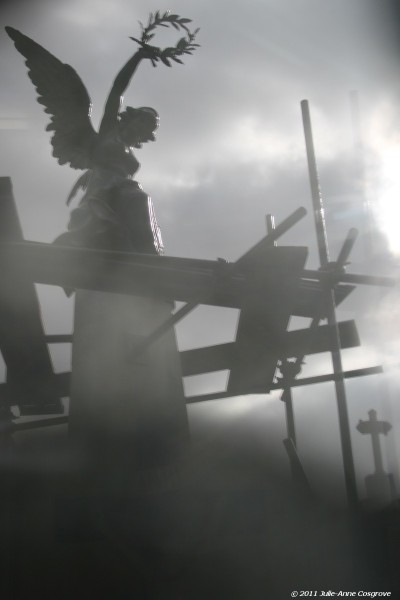Argentina, Buenos Aires, Cemeteries, Recoleta Cemetery
In memoriam
I have a photo album that I treasure, with a grey-blue leather cover and thick black pages, filled with the pictures I took on my first visit to Recoleta Cemetery eight years ago. There is a close-up of a memorial stone from 1859, with a pleasingly curved top, decorative inscription and shiny brass knob. It is one in a grid of time-stained marble slabs with names and end dates, masking the shelves of coffins. Or, should I say, it was…
When I went to the cemetery last week, this beautiful sepia structure had been obliterated; in its place a damp mountain of earth, guarded by two wheelbarrows and two workmen. “They’ve taken out all the bodies,” one of them declared, when I asked him for an explanation. “That’s all that remains,” he added, pointing to five bones on a narrow shelf outside. The property has changed hands and new occupants will be moving in. I often refer to the tombs at Recoleta Cemetery as ‘miniature houses for the dead’, so it should not surprise me that the latest owners of the ‘house’ in question are refurbishing. I can’t help but feel sad, though, that these names and this piece of history have been wiped away.
As I made my way towards the exit after more than three hours, too cold to stay any longer, I spied this reflection of a cenotaph (a tribute to three friends who died close together in time). Here, a gentle restoration was underway, complete with scaffolding that lent more than a touch of allegory. I see a Platform to heaven or hell, the angel with her crown of laurel rising victoriously above.

